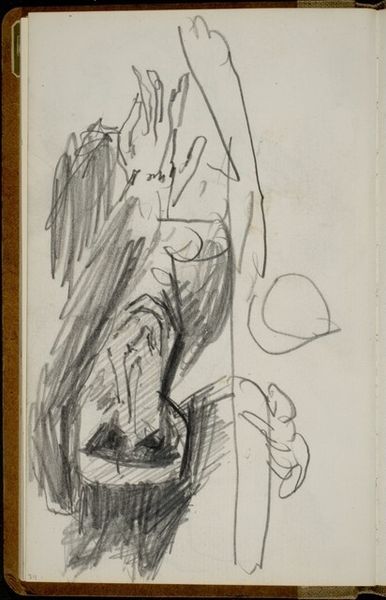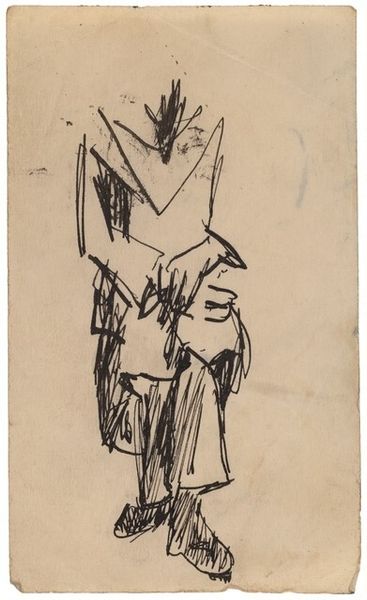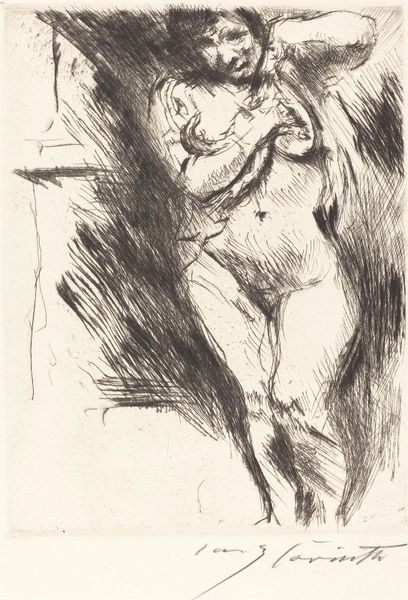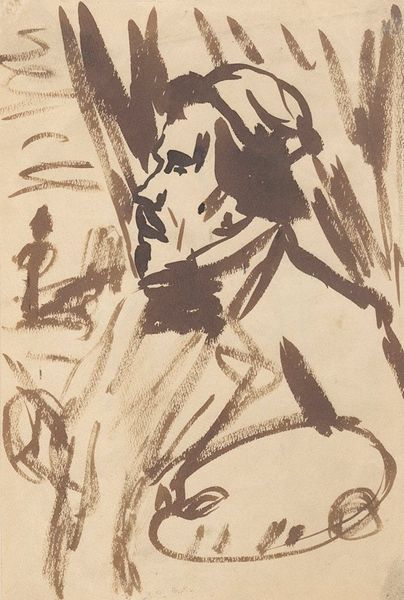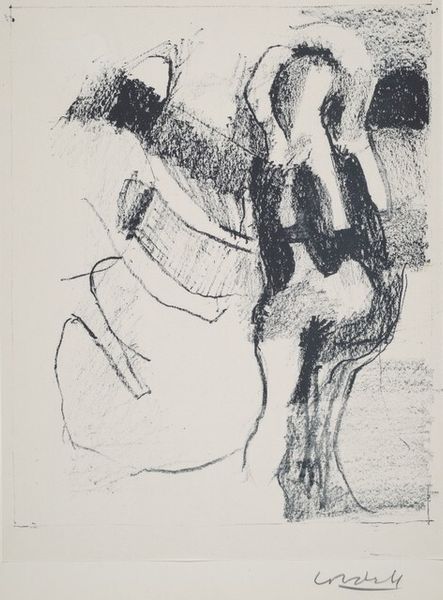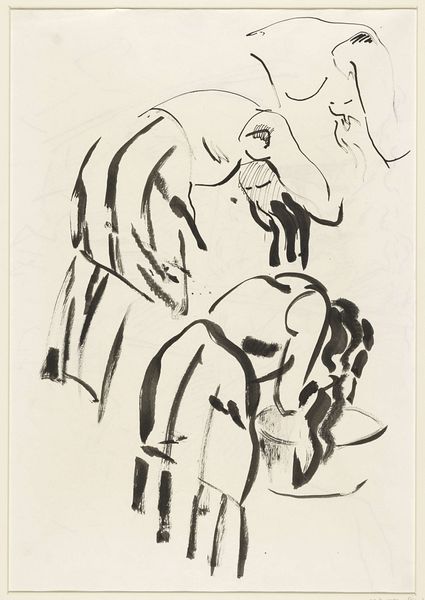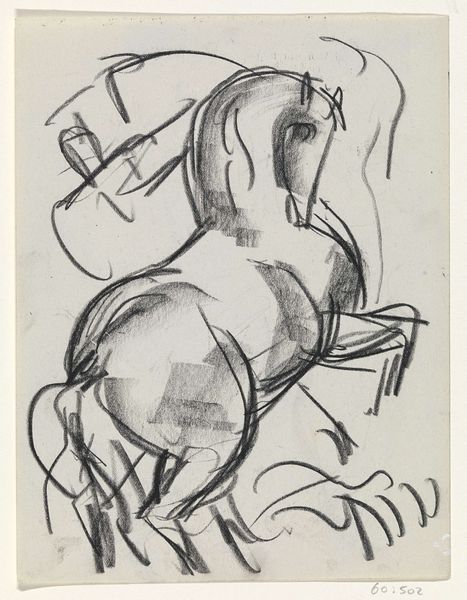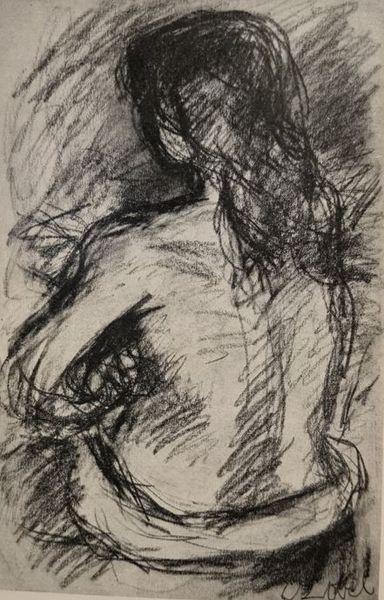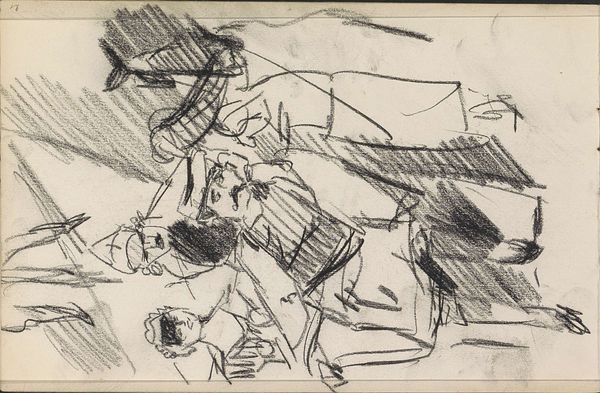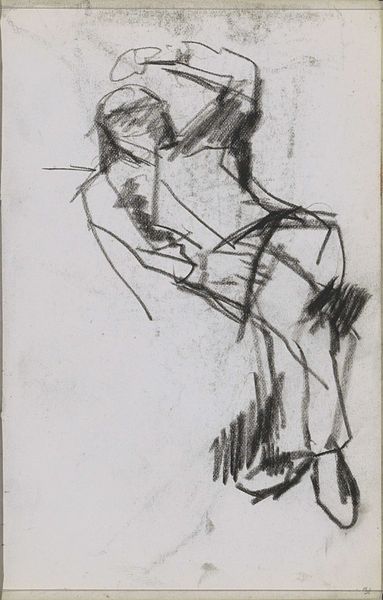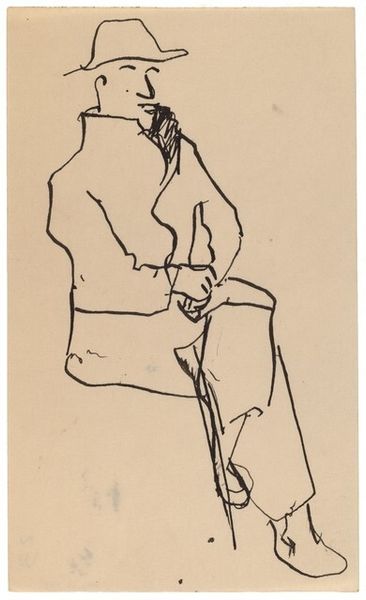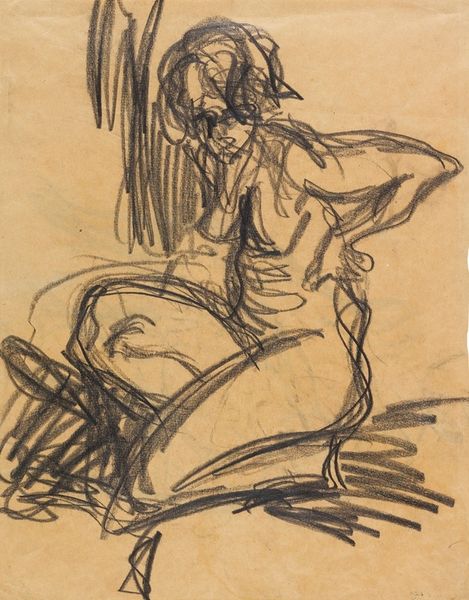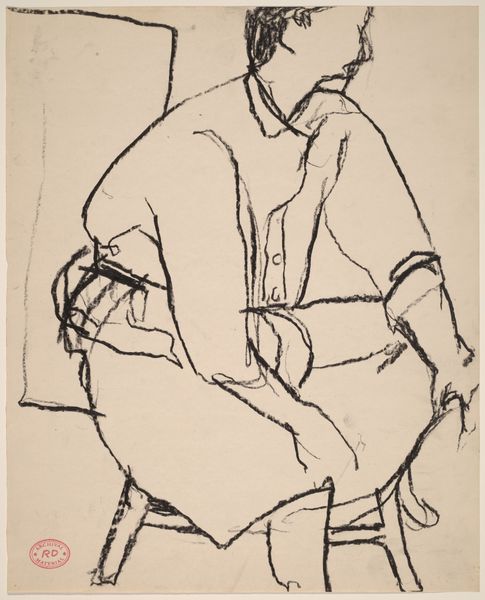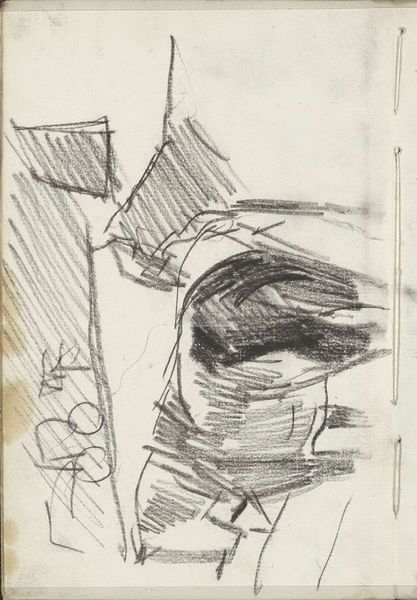
drawing, ink, pen
#
portrait
#
drawing
#
ink drawing
#
figuration
#
ink
#
line
#
pen
Dimensions: overall: 12.5 x 7.5 cm (4 15/16 x 2 15/16 in.)
Copyright: National Gallery of Art: CC0 1.0
Editor: Here we have "Woman in Dress Seated on Armchair with Left Arm Raised," a pen and ink drawing, made by Mark Rothko. The stark lines feel almost frantic, don't they? What strikes you most about the materiality and production of this image? Curator: The apparent speed and roughness are crucial. Look at the directness of the ink on paper. What kind of labor went into this? Was this a preliminary sketch, a study, or a finished piece? It challenges the conventional hierarchy, where drawing is often seen as subservient to painting or sculpture. How does this potentially undermine capitalist art valuation practices, where “finish” often equates value? Editor: That’s a great point. The unfinished quality almost feels like a conscious rejection of the market's demands. Do you think the domestic setting – the woman in an armchair – adds another layer to that commentary? Curator: Absolutely. The choice of subject reinforces the challenge to established values. Domestic life, often associated with women’s unseen and unpaid labor, enters the frame. The sitter's gesture seems nonchalant, informal, a departure from traditional, posed portraits, suggesting a different value system entirely, one less reliant on grandeur and display, and closer to something more egalitarian. Does it succeed? Editor: I'm starting to see the connection between the rapid execution, the domestic scene, and this resistance to the traditional art market. Rothko’s choice of medium, a simple ink drawing, is in itself a challenge. Curator: Precisely! It's not just what is depicted, but how it's made and the conscious decision of the artist to prioritize labor that defies the existing consumerist culture. Editor: It’s really amazing how much can be unpacked simply by focusing on the materials and the means of production. Curator: It is, and remember, it’s an ongoing critical project. Keep questioning the role of the artist’s hand and the societal forces that shape artmaking.
Comments
No comments
Be the first to comment and join the conversation on the ultimate creative platform.
